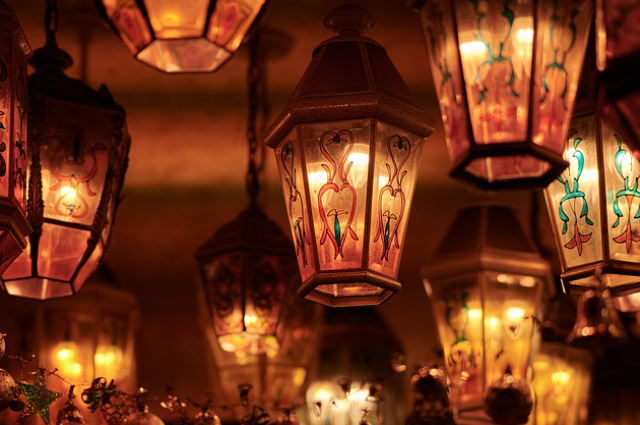
Image by ymyphoto from Pixabay
Shiny lights, traditional clothes, quality time with family and friends, bowing to your parents and elders to seek their blessings and wish them good health while receiving the same in return, delicious dishes, faces filled with smiles, moments filled with joy and laughter... Yes, festivals, the energetic and vibrant celebrations of life. The meaning of this word is the same all around the globe, regardless of country, ethnicity, or religion. Festivals of all kinds, for everyone.
India is well known for its diverse culture, various traditions and customs, multiple languages, and countless festivals. Today, let’s take a look at the festivals of Korea.
Seollal (설날)
The first festival celebrated in South Korea is Seollal, the Lunar New Year. January 1st marks the start of the new year in official records, but in many Asian countries, the fresh start of the year falls on different days. Seollal usually occurs in late January or early February.
Those living outside Korea often travel back to their homeland to reunite with family and perform Charye (차례) ancestral memorial rites. Families hold this special ritual to remember and honor their ancestors. A table full of various foods is prepared, including rice, soup, meat, fish, fruits, and tteokguk (rice cake soup).
Family members bow in reverence and share warm tteokguk, a soup made with thinly sliced rice cakes in broth, a symbol of purity and new beginnings. Interestingly, some women avoid eating tteokguk on Seollal, as eating it symbolises becoming one year older!
A common Seollal greeting is: "Have you eaten tteokguk yet?"
On this special day, people wear traditional Korean clothing known as Hanbok (한복). Elegant and colourful, Hanbok represents respect, dignity, and formality during important days. Younger family members bow deeply to their elders, receive blessings, and are gifted sebaetdon (세뱃돈) — New Year’s money in an envelope, along with good wishes and happiness. Most festivals include food, clothing, rituals, and games. Seollal is no exception. Families enjoy traditional games like:
- Yutnori (윷놀이): A board game played with four wooden sticks
- Jegichagi (제기차기): Korean foot shuttlecock, often with tiny bells
- Tuho (투호): A game of throwing arrows into a narrow-necked jar
- Yeonnalligi (연날리기): Kite flying, where children compete to fly their kites the highest
- Neolttwigi (널뛰기): A traditional see-saw game, usually played by girls
- As for food, families prepare:
- Jeon (전): Savoury pancakes, pan-fried and delicious
- Galbijjim (갈비찜): Braised short ribs
- Japchae (잡채): Stir-fried glass noodles with vegetables and meat
- Yakgwa (약과): Sweet honey pastries for dessert
After the feast and games, families gather for some gossip and laughter while watching Seollal TV specials, variety shows, music performances, and family-oriented or historical dramas.
This festival refills the hearts of people exhausted by life's responsibilities work, studies, struggles. It acts as a spiritual reconnection, giving them strength for the journey ahead.
Chuseok (추석)
Chuseok is Korean Thanksgiving Day, celebrated in September or early October on the 15th day of the 8th lunar month. It is one of South Korea’s biggest and most important holidays, another cherished time for family reunions. The highways see massive traffic jams, and airports and train stations are crowded. Homesickness fills the air and the roads. So, what makes this day special beyond the traditional Hanbok and ancestral rituals?
Chuseok celebrates the harvest. Marking the end of the harvesting season for crops like rice and grains, Koreans thank the Earth for its bounty and farmers for their hard work. Families gather to share and prepare meals using freshly harvested crops a beautiful symbol of unity and gratitude to Mother Nature.
The main dish of Chuseok is Songpyeon (송편), half-moon-shaped rice cakes made from glutinous rice flour and filled with sesame seeds and honey, sweet red bean paste, chestnuts, or jujubes. These cakes are steamed over pine needles for a fresh, aromatic scent and symbolise hope for a bright future.
Namul (나물), seasoned vegetable dishes made with fresh, newly harvested greens like spinach, gosari (bracken fern), and bean sprouts, are also prepared. Baek Kimchi (백김치), or white kimchi, is often served at the Chuseok table.
Families visit ancestral graves, clean the tombs, and trim the grass to honour their ancestors and seek blessings for fertility, health, and future harvests. Another special element of Chuseok is the full moon. It represents completion, abundance, unity, good fortune, and prosperity. Many believe the full moon on Chuseok brings good luck and togetherness. Families make wishes and pray under its light.
Women perform the traditional moonlight folk dance Ganggangsullae (강강술래) as a symbol of peace and hope. The full moon and new moon represent nature’s two main phases represent the cycle of growth, harmony, fulfillment, and renewal. Koreans honor ancestors as a symbol of the past and pray for a prosperous future.
Traditional folk games blur generational gaps and strengthen community bonds. One such game is Ssireum (씨름), Korean wrestling. Two players wear cloth belts and attempt to knock each other over using strength and skill. The winner is celebrated as the strongest person.
This festival not only honours the Earth but also those who supported us in difficult times, people who stood by us, believed in us, and inspired us when we doubted ourselves.
In Conclusion
These Korean festivals bring us together to breathe in joy, laughter, and love and to breathe out pressure, failures, and despair. No matter where you are, participate in the celebrations around you. You might just find your reason to live and realise that you exist for a purpose.
